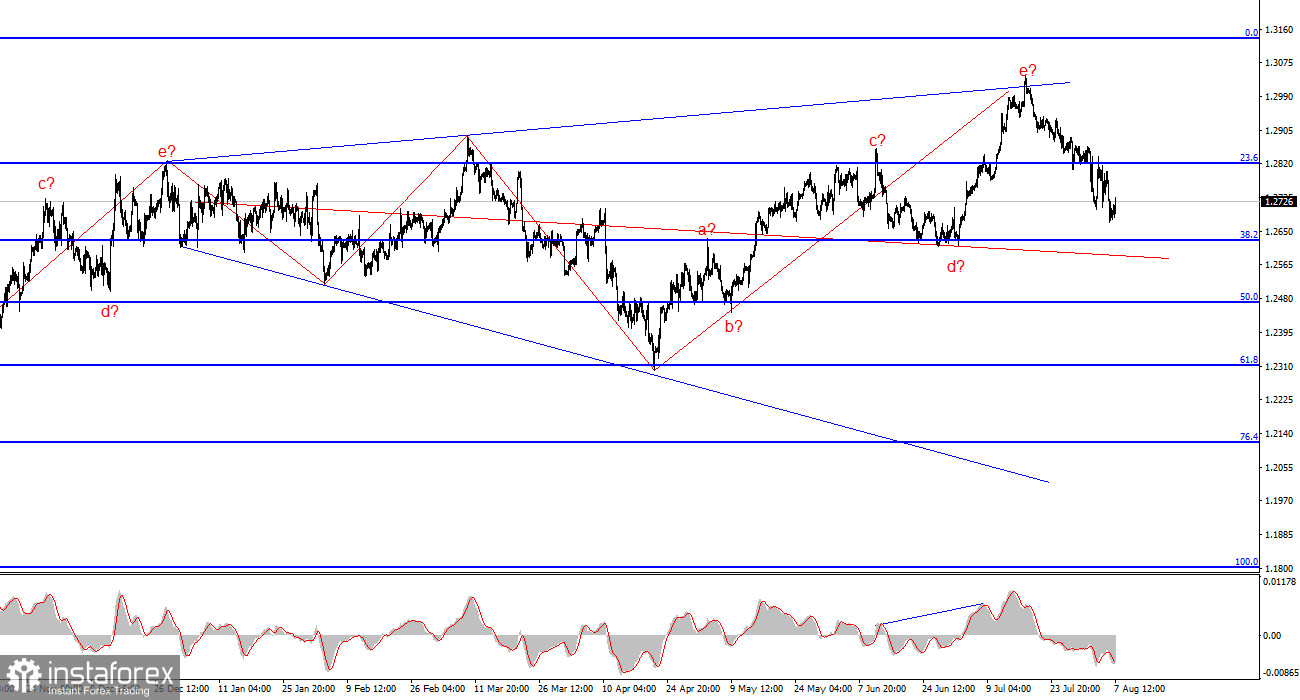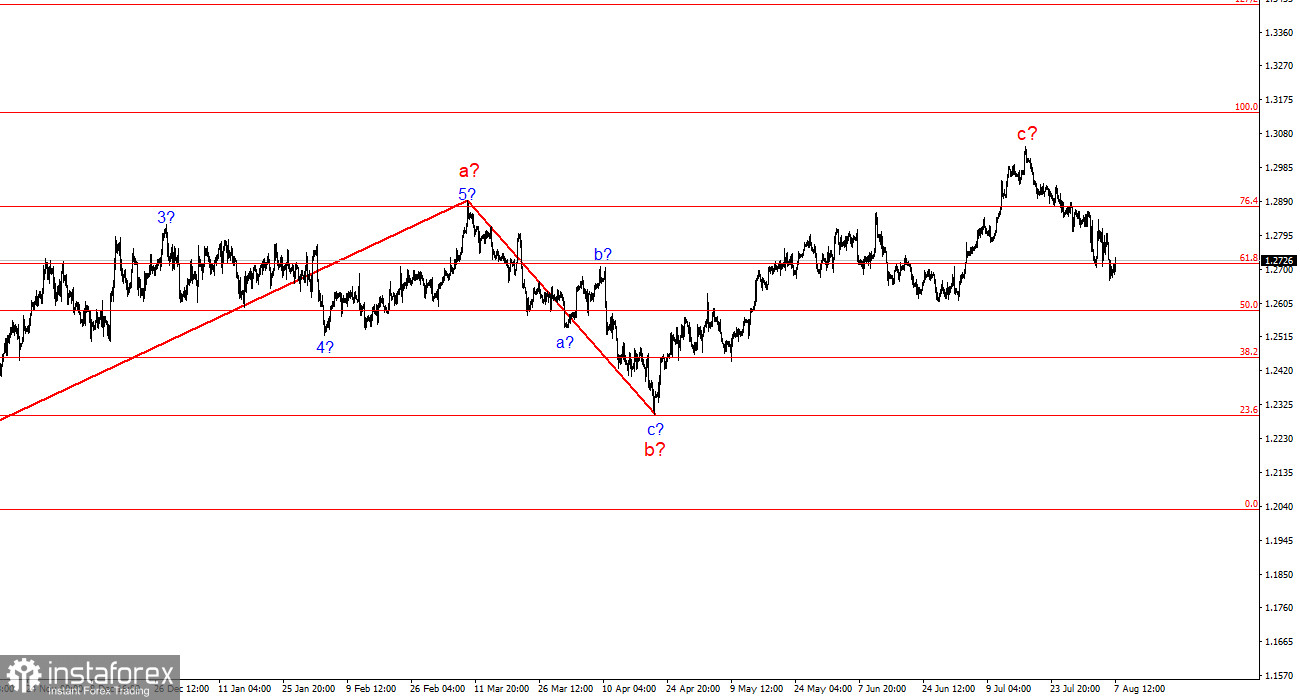
The wave pattern for GBP/USD remains quite complex and very ambiguous. For some time, the wave structure looked quite convincing and suggested the formation of a downward wave set with targets below the 1.23 level. However, in practice, the demand for the U.S. currency grew too strongly for this scenario to play out.
Currently, the wave pattern has become completely unreadable; in my analysis, I try to use simple structures, as complex ones have too many nuances and ambiguities. Now we see an upward wave that has overlapped a downward wave, which overlapped a previous upward wave, which overlapped a previous downward wave. The only assumption that can be made is an expanding triangle with the upper point around the 1.30 level and a balancing line around the 1.26 level. The upper line of the triangle has been reached, and the unsuccessful attempt to break it indicates the market's readiness to form a downward wave set. The unsuccessful attempt to break through the 1.2822 level, corresponding to 23.6% Fibonacci, indicates a possible resumption of the decline in the near future.
A decline of up to 130 points is likely for the pound.
The GBP/USD rate increased by 40 basis points on Wednesday, but the amplitude of movements sharply decreased today. For the second day in a row, there is no news in the U.K. and the U.S., and the market prefers to trade on strong news right now. On Monday, the drivers were rumors of a possible unscheduled Fed meeting and a sharp rate cut amid weak payrolls and unemployment reports, as well as the ISM services PMI. On Tuesday, no important information was received. Today, none as well. The market has stabilized and is awaiting new information.
Since there is no recent news, the upward five-wave structure is complete. The instrument has generated a strong sell signal near the upper line of the expanding triangle. I can only expect a decline in the British currency. The only question is how fast it will be. Obviously, after five waves up, everyone expects to see three waves down. Will the 1.26 level be reached within the first wave, or will it require more time?
By the end of the week, I do not think the 1.26 level will be reached. There will be no news in the U.K. and the U.S. on Thursday and Friday. Consequently, the market will most likely take a pause and wait for inflation reports. Once these reports are out, new forecasts for central bank actions at the September meetings can be made. I expect the Bank of England to lower the rate for the second time in a row, and I highly doubt the Fed will ease its policy.
General conclusions
The wave pattern for GBP/USD still suggests a decline. If an upward trend began on April 22, it would have already acquired a five-wave structure. Consequently, in any case, we should now expect at least a three-wave correction. The unsuccessful attempt to break the upper line of the triangle indicates the market's readiness to form a downward wave set. In my opinion, in the near future, sales of the instrument should be considered with targets around the 1.2627 level, which corresponds to 38.2% Fibonacci.
On the higher wave scale, the wave pattern has transformed. Now we can assume the construction of a complex and extended upward corrective structure. At the moment, it is a three-wave structure, but it can transform into a five-wave structure, which will take several more months, if not longer.
Key principles of my analysis:
- Wave structures should be simple and understandable. Complex structures are difficult to trade and often undergo changes.
- If there is no confidence in the market situation, it is better not to enter it.
- There is never 100% certainty in the direction of movement. Do not forget about protective Stop Loss orders.
- Wave analysis can be combined with other types of analysis and trading strategies.






















